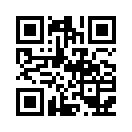What is a Set-Top Box (STB)?
What is a Set-Top Box (STB)?

A set-top box is a hardware device that allows a digital signal to be received, decoded and displayed on a television. The signal can be a television signal or Internet data and is received via cable or telephone connection.
In the past, set top boxes were mostly used for cable and satellite television. The STB could deliver more channels than a television's own channel numbering system. It received signals containing data for multiple channels and filtered out the channel a user wanted to view. The numerous channels were generally transmitted to an auxiliary channel on the television. Other features included a decoder for pay-per-view and premium channels.
Today, most STB systems have two-way communication, allowing for interactive features like adding premium channels directly from the device or incorporating Internet access.
A set-top box is also known as set-top unit.
Sunshine explains Set-Top Box (STB)
The evolution of set-top boxes can be traced back to early 1980s, when a cable converter box was required to receive extra analog cable TV channels and convert them to content capable of being displayed on a regular television screen. The cable converter boxes came with a wired or wireless remote control, which helped to switch a channel to a low-VHF frequency for viewing on the TV. Some newer television receivers significantly reduced the need for external set-top boxes but they are still in wide use. Cable converter boxes are sometimes required to descramble premium cable channels and receive interactive services such as pay per view, video on demand and home shopping channels.
Set-top boxes can be divided into several categories ranging from simple boxes that receive and descramble incoming AV signals, to complex units delivering a slew of services such as videoconferencing, home networking, IP telephony, video on demand and satellite broadband TV services.
The set-top boxes can be broadly classified into the following types:
Cable Converter Box: Converts any type of channels broadcasted from a cable television service into analog radio-frequency signals on a single VHF channel. This unit can enable a noncable-ready television to receive cable channels. Some of these cable converter boxes can also descramble the signals to manage many channels that are carrier-controlled and access-restricted.
TV Signal Sources: These include Ethernet cable, a satellite dish, DSL connections, a coaxial cable, broadband over power line or even an ordinary VHF or UHF antenna.
Professional Set-Top Box: These are also referred to as integrated receiver/decoders designed especially for robust field handling and rack mounting environments. These are generally used in the professional broadcast audio or video industry and include a unique feature for producing uncompressed serial digital interface signals.
Hybrid: These came into existence in late 2000s and became popular among both pay-TV and free-to-air set-top box businesses. Hybrid set-top boxes facilitate the traditional TV broadcast from cable, satellite and terrestrial providers and combine it with the video output provided over a network and personal multimedia content. Hence, they give users a wide variety of viewing content, eliminating the need for having a separate box for each service.
IPTV: These set-top boxes are small computers that allow two-way communication on an Internet Protocol network and the decoding of video streaming media.
NAVIGATION
CONTACT US
- Name:
- LINDA
- Tel:
+0086-13632970410
+0086-0755-27334811-806
- Email:
- linda@sunshinetopbox.com
- Skype:
- ahappygirlyi
- Address:
- Floor 5-6th, A2 building, B3 district, Fuhai industry park, Fuyong street, Baoan district, shenzhen, P.R. China (Postcode:518103)
E-mail Subscriptions
QR code



